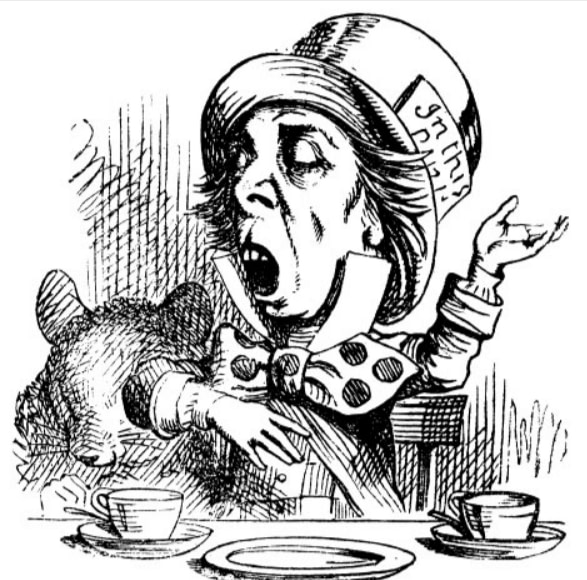Going backwards isn’t usually the best or easiest way to get to your goal. But with training design, it can actually be the quickest route. You’re wondering how that is even possible?
Begin at the end, and you’ll soon get to the start!
It sounds like a confusing riddle that wouldn’t be out of place in an Alice in Wonderland novel.
However, the concept is surprisingly simple.

Here’s what you need to know about the backwards design method (and why you should use it).
What is backwards design?
Backwards design was first introduced by educators Grant Wiggins and Jay McTighe in their book, Understanding by Design.
As the name suggests, backwards design involves starting at the end and finishing at the beginning.
The steps run in this order:
- Objectives: What are the desired results of this learning experience?
- Assessment: How will learning be evidenced?
- Content design: How will the learning experience enable students to pass the assessment and achieve the objectives?
Like the Mad Hatter, it sounds slightly nuts, but it actually makes a lot of sense to start with the end goal or desired objectives. If you know precisely what learners need to achieve and what will measure their success, then it’s a lot easier to create effective experiences that lead up to that point.
In contrast, traditional design begins with the learning content – activities, lessons, etc. – and then implements assessment tools.
This places the focus on the content rather than prioritizing student understanding and achievement.
How does it benefit instructional design?
Backwards design is effective for encouraging instructional designers to think more critically about the purpose of training. And, to consider how well the content fits the purpose.
At some point, you’ve likely endured a lengthy training program and questioned the purpose of certain content. Some elements seem like unnecessary filler, adding little to no value.
Also known as “fluff,” backwards design seeks to get rid of this and enables you to keep learning objectives, assessments, and activities that are tightly aligned.
Each and every piece of content you design will have a specific purpose that enables learners to reach the end goal successfully.
This makes backwards design a particularly efficient method that will:
- Save you a ton of time and resources.
- Ensure you only focus on what really matters.
- Keep learners more engaged and prevent them from content overload and fatigue.
Even though they may not admit it, your clients want training that delivers maximum value and effectiveness for a minimal cost. And backwards design is a way to achieve this without compromising on quality.
The steps toward backwards design
So, let’s look now at how you carry out backwards design. As outlined above, there are three distinct phases to the process.
1. Identify the final outcome
No matter which design method you use (backwards or otherwise), you should know what the objectives are before you begin the process.
Really, it’s impossible to understand what you need to design before you know why.
Focus on the big picture:
- What should students know, understand, and be able to demonstrate by the end of the learning experience?
- How will the students’ behavior change by the end of the course?
A useful framework I recommend for this stage is Bloom’s Taxonomy.
By looking at the cognitive levels and associated action verbs, you can determine the specific types of thinking and/or skills that learners must achieve.
This helps you create clear – and most crucially – measurable learning objectives that align with the desired outcomes.
Additionally, using Bloom’s Taxonomy ensures that your goals are specific and actionable, providing a strong foundation for stage two of the backwards design process.
Here’s an example:
- You must design a leadership training program.
- The final outcome is to “Demonstrate effective conflict resolution in workplace scenarios.”
- Using Bloom’s Taxonomy, you can identify this as an Applying-level objective, where learners can apply their knowledge in real-world situations.
- This specific outcome provides a clear, measurable target for the rest of the design process.
2. What will determine success?
Creating assessments with no learning content in place will feel strange at first. After all, what, exactly, are you going to test students on?
The answer is to refer to the learning objectives you just created.
- What type of assessment will directly measure the desired outcomes?
- What criteria will successfully evaluate their performance?
- What evidence will show that learners have achieved the outcome?
Let’s go back to our leadership training example to see how these questions might be answered:
We know that the desired outcome is for participants to demonstrate effective conflict-resolution skills.
Therefore:
- Success could be measured through a role-playing assessment, where participants must test their ability to apply the techniques they’ve learned.
- To evaluate performance, the criteria could include:
- Use of active listening
- Effective communication techniques.
- Identification of the root cause of the conflict.
- Proposing solutions that address needs.
- Maintaining professionalism and composure.
- The evidence that learners have achieved the outcome would include observable actions and receiving positive feedback from facilitators.
It’s important to also incorporate formative assessments throughout the learning experience (quizzes, peer reviews, self-reflection, etc.).
These will bridge the gap between the learning activities and the final outcomes and ensure that knowledge is gained and retained along the way.
Besides doing a great job of reinforcing learning, they also gradually prepare for the final assessment, making it feel less daunting or challenging.
3. Design the learning content
Now we finally reach the stage where you can go ahead and design the content for the learning experience.
With firm objectives and assessment strategies in place, you have a full framework available.
You will now find it much easier to identify and select content that directly supports the framework and ditch anything that doesn’t align with the purpose.
So, if you’ve developed formative assessments, the first stage of your content should give learners what they need to pass the first test, and so on.
Let’s go back to our example one last time. Training content that fits the objectives of the leadership training program might be:
- Role-playing workshops that introduce learners to key concepts such as active listening, empathy, and problem-solving strategies.
- Case studies offer learners the opportunity to analyze real or hypothetical workplace scenarios, identify the root causes of conflicts, and propose resolutions.
- Guided practice in a structured environment where learners apply conflict resolution techniques to simulated scenarios.
- Additional resources, such as video tutorials, articles, and self-paced exercises, can deepen understanding and aid help knowledge retention.
Here we can see that each activity is carefully aligned with the desired outcomes and adds value to the experience. Nothing is surplus to requirements.
Which learning experiences suit backwards design?
Of course, backwards design is just one of many training design frameworks at your disposal. While it’s suitable for a lot of learning experiences, you must still carefully consider if it’s the right one for your needs.
As a general rule of thumb, it suits these types of training best:
Goal-orientated training
Programs with very clear and defined goals are excellent candidates for backwards learning because it’s straightforward to arrive at the desired outcomes.
For instance, the objective of a sales training program designed to increase product sales is simple to define and measure.
Skills and competencies
Learn how to do the thing!
Again, skills and competencies are very easy to measure and the objective is usually clear.
For instance, teaching people how to use a piece of software:
- Software proficiency is the objective.
- And, “Can they demonstrate how to use the software properly?” Is what determines success.
- “Can they demonstrate how to X specific feature?” will enable formative assessments throughout the training.
- Content design should focus on learning and using the features one by one.
E-learning and online courses
E-learning and online courses benefit greatly from backwards design because they tend to rely on clear navigation and measurable outcomes. This is usually because e-learning is self-paced and doesn’t take place in a live environment.
By using this method, you can create specific, focused modules and assessments that guide learners toward the end goals.
Programs with clear assessment needs
As you may have noticed, backwards design is very assessment-centric. So in training where evaluation is central, the method makes sense.
Typically, this refers to academic courses or professional qualifications that require stringent assessment tools to accurately measure success.
Certified courses
In a similar vein, certified courses, such as project management or coding, also require learners to demonstrate their skills to a standardized level.
Using backwards design will ensure that every element of the course directly contributes to equipping learners with what they need to pass the certification exam.
Does backwards design work all the time?
The quick answer is “no.” Backwards design is not suitable for all learning experiences.
As you can likely guess, it doesn’t lend itself well to open-ended or continuous learning where there isn’t a specific end goal. For instance, exploratory learning such as creative arts, early childhood discovery, and self-improvement.
Also, if the objective is to drive innovation and develop original thoughts, then the end goal is likely to be fluid. This is going to make backwards design challenging because evolving goals are tough to define upfront.
Finally, since backwards design relies on having information upfront, it’s not going to work when that information is limited. If you lack clarity on the objectives, then a traditional approach to design will be more effective.
Final thoughts
Now that you understand the process, give backwards design a try in your next project. Although it may feel strange at first, backwards design is a very logical approach to creating worthwhile training experiences. Focus on clear outcomes and plan intentionally. You’ll be surprised at how easily the rest flows!

By Janette Bonnet
Janette Bonnet is an experienced L&D professional who is passionate about exploring instructional design techniques, trends, and innovations.
